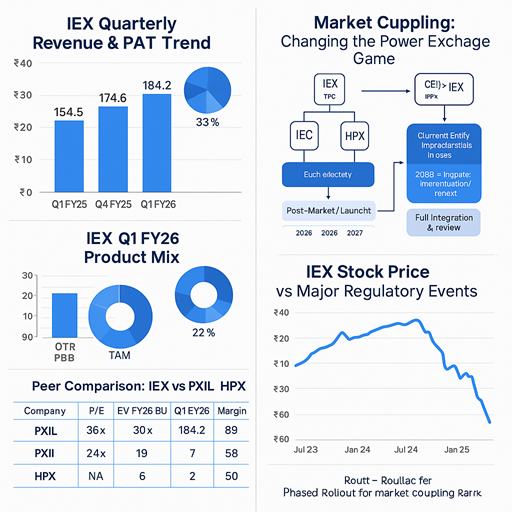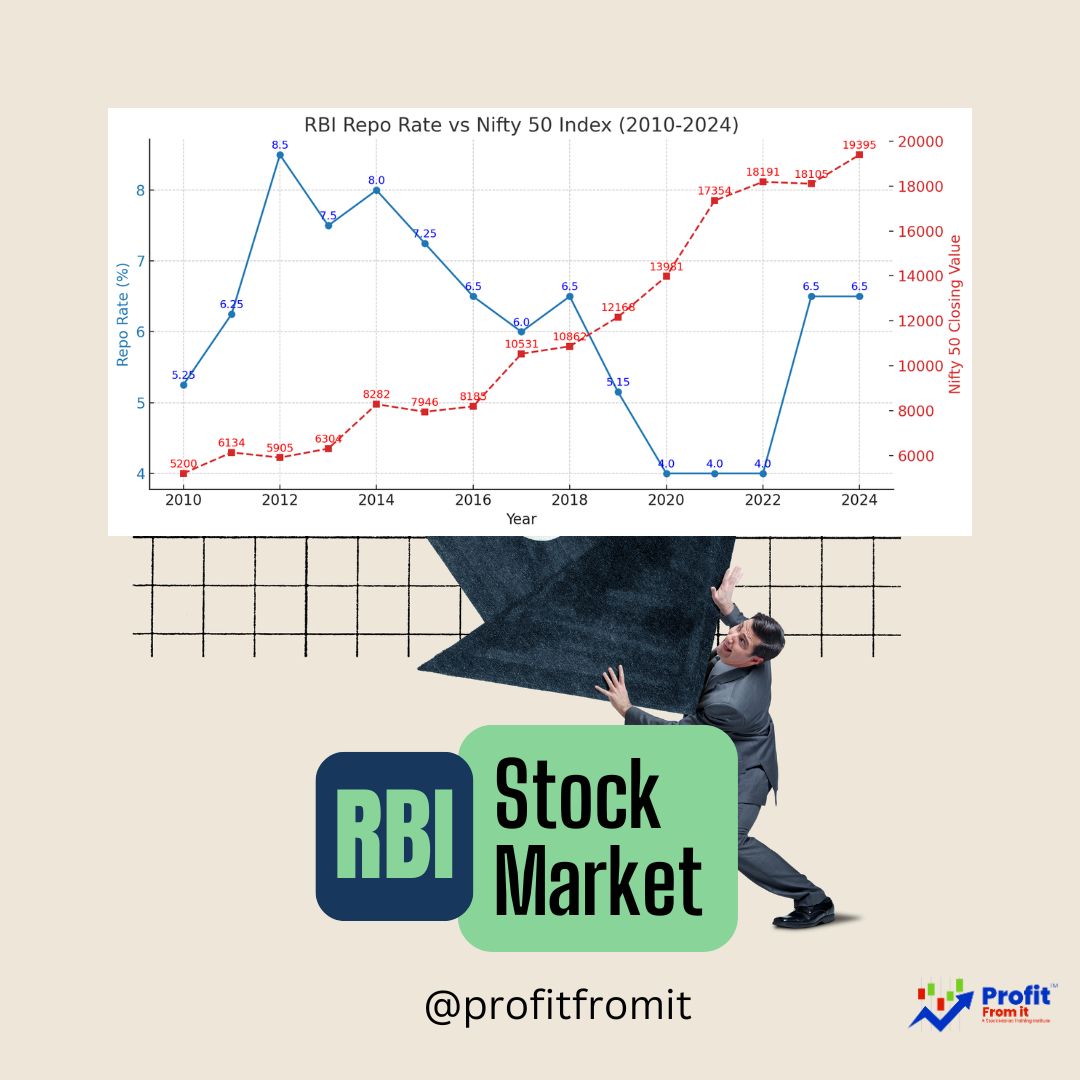
⚡ IEX in Flux: Q1 FY26 Results Amid Market Coupling Shock
🚨 A 28% Crash and the Catalyst Behind It
On July 24, IEX’s stock plummeted nearly 28% to ₹135.26 after the Central Electricity Regulatory Commission (CERC) greenlit market coupling for power exchanges. This tectonic regulatory shift promises centralized price discovery, potentially stripping IEX of its dominant edge.
📌 What Is Market Coupling and Why Investors Should Care
Market Coupling is a price pooling mechanism under which bids from all Indian power exchanges are consolidated by a central Market Coupling Operator (MCO). The MCO, rotated quarterly, sets a uniform market clearing price — diminishing exchange-specific pricing autonomy.
🔍 Immediate Implications for IEX:
🔒 Loss of pricing control
📉 Compression in transaction fees
🧭 Volume shift risk to peers (PXIL, HPX)
⚔️ Collapse of competitive differentiation
How does this affect IEX?
Investor Concern: IEX’s “unique” advantage of being the price setter vanishes, hurting valuation premium.
📉 Regulatory Jolt Meets Financial Resilience
On July 24, Indian Energy Exchange (IEX) released its Q1 FY26 results — just hours after the Central Electricity Regulatory Commission (CERC) approved market coupling. The timing couldn’t be more dramatic: while the stock plunged nearly 28%, the company posted double-digit volume growth and strong profitability.
📢 Latest Q1 FY26 Performance Highlights
Volumes & Segmental Growth
Electricity Volumes: 32.4 BU, up ~15% YoY
Renewable Energy Certificates (RECs) Traded: 52.7 lakh, up ~149% YoY
Financials (Consolidated)
📌 RTM and Green segments led the charge with 41% and 51% YoY growth respectively.
📰 Key Sector Updates (Q1 FY26)
Peak Power Demand: 242 GW in June 2025
Supply Liquidity: Improved, leading to a 16% drop in Day-Ahead Market (DAM) prices to ₹4.41/unit; Real-Time Market (RTM) at ₹3.91/unit (↓20% YoY)
Fuel Situation: Ample coal/gas supply, 25 days coal inventory as of July
RE Penetration: 25%+ share, strong growth in wind/hydro
⚡ Immediate Impact of Market Coupling Announcement
Stock Reaction: IEX fell up to 28% as CERC confirmed a move to market coupling for all power exchanges.
Reason: Loss of monopoly on price discovery, risk of lower transaction fees and margin compression.
Investor Worry: De-rating risk, as monopoly status, liquidity moat, and pricing power come under threat.
IEX vs. Peers (MCX, PXIL, HPX) - Comparative Analysis
🔎 Valuation: What Changes with Market Coupling?
Analyst Consensus (Updated):
No coupling would give the F-EPS of 5.9 resulting in the F_PE of 22.6 which was great, but due to market coupling now F_EPS if seen with 30% downgrade in earnings it should be 4.2 resulting in F-PE of 32.
Most brokers have revised targets to ₹130–₹145 post-coupling news (down from ₹190–₹210 earlier).
Table 2: Comparison of Analyst Price Targets and Commentary for IEX
🔮 Strategic Levers & Growth Drivers
Despite regulatory headwinds, IEX is doubling down on innovation:
Green RTM & Long-Duration Contracts: Petition filed, public comments closed
REC Market Expansion: 4.1 crore inventory; fungibility enabled
Battery Storage & FDRE Models: BESS tender pricing down 75% YoY
Diversification: IGX (Gas), ICX (Carbon), Coal Exchange in pipeline
📈 Volume growth multiplier of 2.5x vs. demand over 10 years — a powerful moat if preserved.
📈 Investment Strategy: What Should Investors Do?
🧭 Watch for management’s tone and roadmap during the investor meet — it could be the pivot point.
✅ Action Plan for Investors
If holding: Stay alert, avoid panic exits. Monitor regulatory clarity and management strategy. Can add at 130 and 99.
If considering a fresh entry: Accumulate on deep dips (₹99, if it falls below 130) if you believe in IEX’s ability to adapt.
Signals to watch: Management commentary, updates on market coupling implementation, new product launches.
🎯 Final Word
Market coupling could be the most disruptive regulatory move in IEX’s history. As results roll in and investor cues unfold, this is not just about valuation — it’s about strategic adaptability. For long-term investors, conviction hinges on management’s response more than revenue momentum.



 for Investors The provided chart outlines key metrics for Nifty 500 companies across different periods (FY22 t.png)





